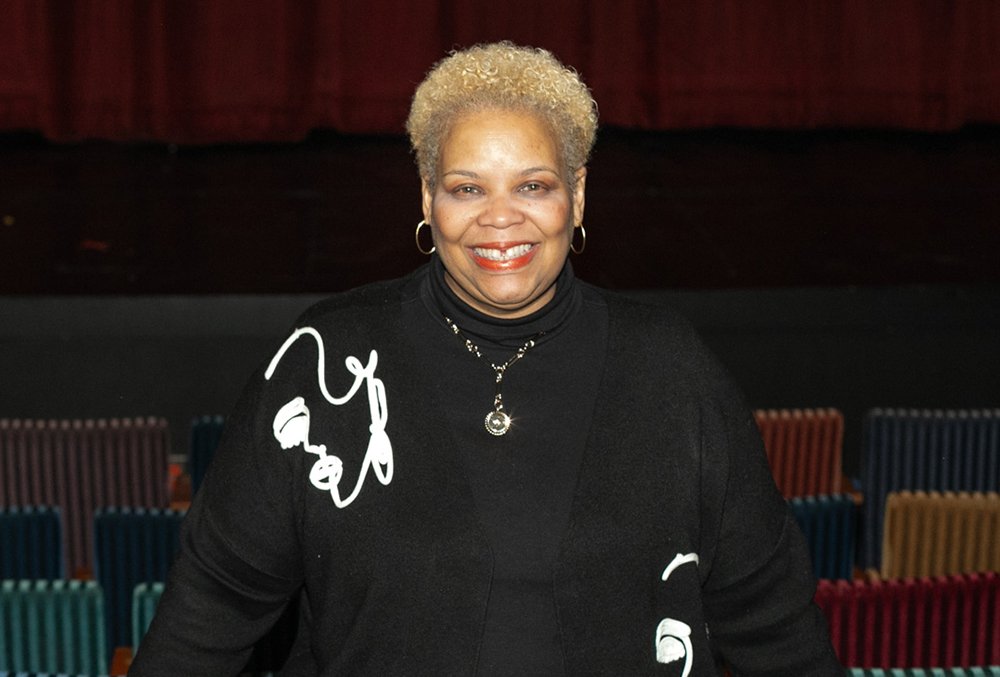Amid Black Music Month, Pride, and Juneteenth, Beverly Arts Center presents Hairspray—a vibrant musical blending youth leadership, racial justice, queer visibility and community celebration (Photo Provided).
During a month when Chicago celebrates Black Music Month alongside Juneteenth and Pride events, Beverly Arts Center moves beyond acknowledgment to amplify these moments through performances and events that captivate audiences.
The South Side institution will present Hairspray, the celebrated Broadway musical, which transports audiences to 1962 Baltimore from the perspective of an endearing, plus-sized teenager with enormous hair and an even larger heart, now playing through June 22. Playing at the Beverly Arts Center, this production delivers entertainment and much more.
“This show isn’t just theater—it’s testimony,” said Dr. Carla Carter, executive director of the Beverly Arts Center. “We chose Hairspray two years ago, but the timing is divine. It’s about joy as resistance.”
Youth demonstrate leadership characteristics when adults struggle to find their path.
Tracy Turnblad’s teenage dream of performing on the Corny Collins Show becomes the story’s central narrative. After discovering that Black children are only permitted TV appearances on “Negro Day,” which occurs monthly, Tracy decides to turn her dancing dream into a campaign for social change. The narrative develops into an integrated story that connects racial justice to body positivity while fostering queer visibility and community support.
Three Communities, One Mission

Dr. Carla Carter (Photo Provided).
The Beverly Arts Center sits at the intersection of three distinct communities: Morgan Park, Beverly and Mount Greenwood. All of them, Dr. Carter emphasizes, “claim us as their own.”
“We are the epicenter of three very different neighborhoods,” she said. “So everything we do has to reflect that. We want anyone who walks through these doors to feel invited, challenged and celebrated.”
It’s more than just a motto–it’s how things actually work here. From the lobby to the tech booth, representation is everywhere. Hairspray doubles as a training program for young creatives thanks to grants from the Illinois Department of Human Services and the MacArthur Foundation.
“This show is their graduation,” Carter said proudly. “Seventeen teenagers—mostly girls and youth of color—have spent months learning lighting, sound, costuming and set design. The three audio engineers? High school girls from Mother McAuley. Our lighting designer? A 19-year-old from Elmhurst College.”
Behind the scenes, youth leadership is just as powerful as what’s happening under the lights.
Representation on Stage and Off
Authenticity was central to this production. Two choreographers, John Marshall Jr. and Ariel Spires, split the show’s dance numbers to reflect both the “nicest kids in town” and the record shop dancers—honoring the cultural textures of each community they portray.
“We wanted to show what segregation looked like—and what joy looked like when those walls came down,” Carter explained.
Even the show’s queer lineage isn’t lost in this telling.
“When John Waters first cast a drag performer as Edna Turnblad, it was intentional. It was radical. And it still is,” Carter said. “Watching rehearsal, it hit me—maybe they didn’t have the language then, but Edna could very well be nonbinary or trans today. That matters. Especially now.”
The Arts as Armor
For Dr. Carter, this production holds a deeply personal significance. A poet, playwright and former drama teacher, she has long understood that art is both a protection and a liberation.
“My grandmother made me recite Maya Angelou’s Phenomenal Woman and Nikki Giovanni’s Ego Trippin every day. It was armor,” she said. “Now, I get to pass that on to others—through the work, through the words and the stage.”
She wants Hairspray to spark more than applause. She wants it to spark a connection.
“After the show, I want to look in our lobby and see someone saying, ‘Your child was incredible,’ to a stranger. I want neighbors who don’t normally speak to share space, share praise. That’s the magic. That’s the ripple effect.”
A Third Place for All
The Beverly Arts Center maintains its position as DEI initiatives encounter opposition and arts funding gets cut.
Our institution functions as a separate third space that exists beyond the realms of church, school and work. A place where families gather, where art invites dialogue,” Carter said. “And right now, that’s sacred.”
Hairspray is more than a summer musical. It’s a cultural statement. It’s a multigenerational classroom. It’s a South Side love letter to unity, protest and possibility.
And as Dr. Carter reminds us, “If we let the kids lead, we’d all be better for it.”
For tickets and more information on Hairspray, visit thebeverlyartscenter.com.
Every ticket helps support youth training and inclusive storytelling—so you’re not just seeing a show but helping build the future.
